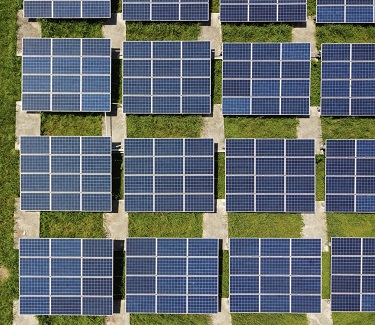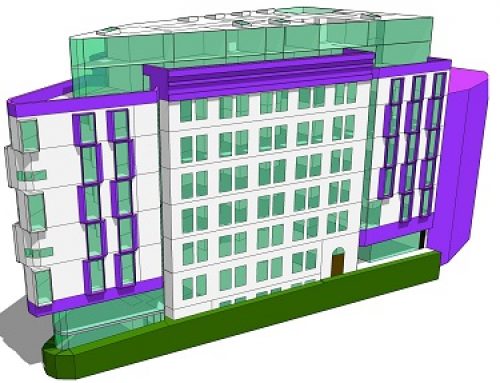Renewable energy: the way forward
Renewable energy is energy generated from an infinite source like the sun. Renewable energy systems that are used widely across Australia are solar PVs, Solar thermal systems and wind turbines; Intermittent and expensive as it is in today’s market, renewable energy definitely plays a positive role in greenhouse emission reduction and energy efficiency of the buildings.

How do renewables help with ESD Compliance?
If you are planning to undertake construction in Australia, you need a building permit. At the building permit stage, commitment to the installation and the use of renewable energy systems has its benefits. Here, we try to investigate these benefits through the eyes of the existing building regulations and ESD guidelines. In order to obtain a building permit, you need to comply with the BCA and the governing council’s minimum requirements. Ecologically Sustainable Design (ESD) guidelines could be followed voluntary or be mandated by the council. By complying with the BCA and council’s requirements, you could get the building permit. You could also participate in non-mandated principles for a sustainable and ecologically-responsive design. The most used tools for ESD design is BESS in Victoria and Green Star, as well as NABERS, MUSIC, etc.
Here, we investigate these principles that are related to energy efficiency and the impact of renewables on it.


NCC and renewable energy requirements
NCC Vol 1.0 and Vol 2.0 has no Deemed to Satisfy (DtS) provisions for residential and commercial buildings. However, if you are building a commercial project, you can have renewable energy generated and used on-site to offset the energy demand of your building. For example, you can generate and use electricity generated by solar PVs to offset the excess greenhouse gas (GHG) emissions of your building. This process must be done through Performance Solutions like JV2 and JV3, as allowed and detailed by the NCC.
Using Alternative Solutions like JV3, you can model your building, calculate its annual energy demand and GHG emissions and also calculate how much renewable energy generation and use contributes to the reduction of GHG emissions of your building, compared to a Reference case with no renewable energy offset. If your Proposed building has lower annual emissions than the Reference building, then your Proposed building complies with the energy efficiency requirements of the NCC, hence, passes the first step to the building permit approval.
Governing councils and renewable energy requirements
Compliance with the BCA requirements is a minimum; meaning that you if you are applying for a building permit, will have to comply with the council’s minimum requirements also. This depends on each council’s degree of facilitation of the ESD into the building design, thus varying from one council to another. In other words, it’s easier to phrase it like this: “governing councils build on top of the BCA requirements and go beyond that“.
For example, the City of Darebin (Victoria) requires buildings with more than 10MWh energy demand, a minimum of 25% of its annual energy to be supplied from renewable sources. This clearly is not a requirement of BCA and goes beyond it.
ESD and renewable energy credit points
There are sets of guidelines that the design team may apply to show that their design is ecologically sustainable. Some of these guidelines might be mandated by a governing council and some might be picked up voluntarily by the design team. Among the tools/guidelines used for an ESD report, BESS and Green Star are the most famous across Australia.
BESS is owned by the Municipal Association of Victoria (MAV) on behalf of the Council Alliance for a Sustainable Built Environment (CASBE). As of 2025, there are 35 councils in Victoria that are members of CASBE and subscribers to BESS [reference].
Green Star Rating system is used more broadly across Australia. There are 8 categ0ries from which the Green Star system rates the sustainability of buildings. The contribution of renewable energy and available points to achieve is discussed below for each rating system:
BESS tool
Below points could be claimed for the proposed building when compared to the BESS in-built calculator benchmark, relevant DTS criteria or Alternative modelling (e.g. JV3 modelling). [reference]
- Energy 4.2- Renewable energy systems – Solar:
Points are awarded when the solar power system provides 5% of the annual energy consumption of the building class it supplies. - Energy 4.4- Renewable energy systems – Other:
Points are awarded when another form of renewable energy (not solar) provides 5% of the annual energy consumption of the building class it supplies. - Energy 4.5- Solar PV – Houses and Townhouses:
Points are awarded when the solar photovoltaic system provides 30% of the annual energy consumption of the building class it supplies.
Green Star Rating
Below points could be claimed for the Proposed project when compared to the Reference Project, relevant DTS criteria or other Green Star Submission Guidelines.
- Resilient – Grid Resilience
Project teams may provide a solution where Active Generation and Storage Systems is used with Demand Response Management. In this situation, the overall reduction must be 10% of the building’s total electrical load (3 points). - Positive – Energy Use
The building uses 20% less energy compared to a reference building, this includes offset due to onsite renewable energy generation (3 points).
The building uses 30% less energy compared to a reference building, this includes offset due to onsite renewable energy generation (additional 3 points). - Positive – Energy Source
100% of the building’s electricity comes from renewable electricity (3 points).
100% of the building’s energy comes from renewables (additional 3 points)


